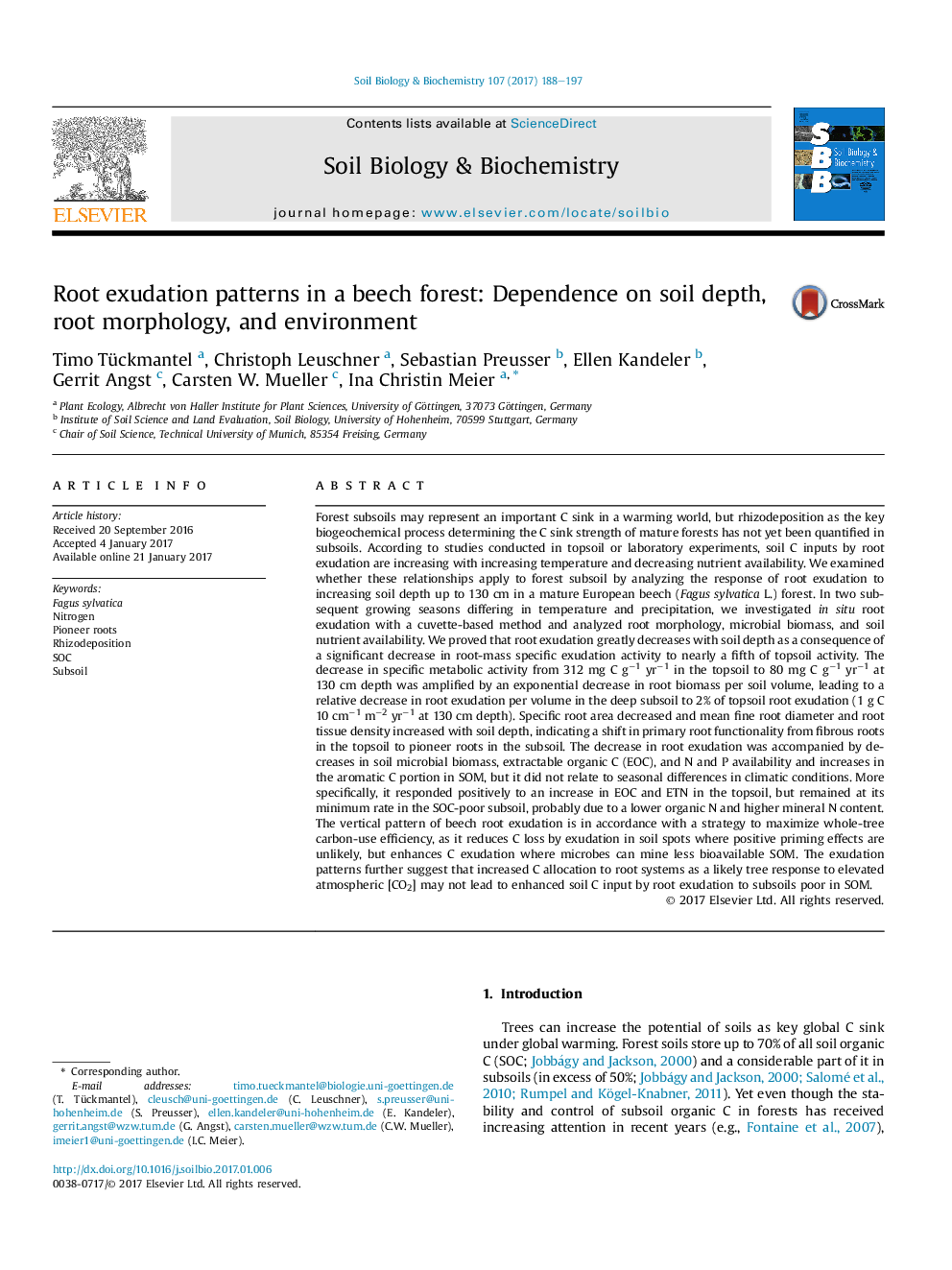| کد مقاله | کد نشریه | سال انتشار | مقاله انگلیسی | نسخه تمام متن |
|---|---|---|---|---|
| 5516429 | 1542577 | 2017 | 10 صفحه PDF | دانلود رایگان |
- Specific root exudation decreased in the subsoil to less than a fifth.
- Root morphology changed from fibrous-type roots in the topsoil to pioneer-type roots in the subsoil.
- Root exudation rate was positively related to EOC and ETN in the topsoil.
- Exudation was particularly low in subsoil poor in SOM where positive priming effects are unlikely.
Forest subsoils may represent an important C sink in a warming world, but rhizodeposition as the key biogeochemical process determining the C sink strength of mature forests has not yet been quantified in subsoils. According to studies conducted in topsoil or laboratory experiments, soil C inputs by root exudation are increasing with increasing temperature and decreasing nutrient availability. We examined whether these relationships apply to forest subsoil by analyzing the response of root exudation to increasing soil depth up to 130 cm in a mature European beech (Fagus sylvatica L.) forest. In two subsequent growing seasons differing in temperature and precipitation, we investigated in situ root exudation with a cuvette-based method and analyzed root morphology, microbial biomass, and soil nutrient availability. We proved that root exudation greatly decreases with soil depth as a consequence of a significant decrease in root-mass specific exudation activity to nearly a fifth of topsoil activity. The decrease in specific metabolic activity from 312 mg C gâ1 yrâ1 in the topsoil to 80 mg C gâ1 yrâ1 at 130 cm depth was amplified by an exponential decrease in root biomass per soil volume, leading to a relative decrease in root exudation per volume in the deep subsoil to 2% of topsoil root exudation (1 g C 10 cmâ1 mâ2 yrâ1 at 130 cm depth). Specific root area decreased and mean fine root diameter and root tissue density increased with soil depth, indicating a shift in primary root functionality from fibrous roots in the topsoil to pioneer roots in the subsoil. The decrease in root exudation was accompanied by decreases in soil microbial biomass, extractable organic C (EOC), and N and P availability and increases in the aromatic C portion in SOM, but it did not relate to seasonal differences in climatic conditions. More specifically, it responded positively to an increase in EOC and ETN in the topsoil, but remained at its minimum rate in the SOC-poor subsoil, probably due to a lower organic N and higher mineral N content. The vertical pattern of beech root exudation is in accordance with a strategy to maximize whole-tree carbon-use efficiency, as it reduces C loss by exudation in soil spots where positive priming effects are unlikely, but enhances C exudation where microbes can mine less bioavailable SOM. The exudation patterns further suggest that increased C allocation to root systems as a likely tree response to elevated atmospheric [CO2] may not lead to enhanced soil C input by root exudation to subsoils poor in SOM.
Journal: Soil Biology and Biochemistry - Volume 107, April 2017, Pages 188-197
